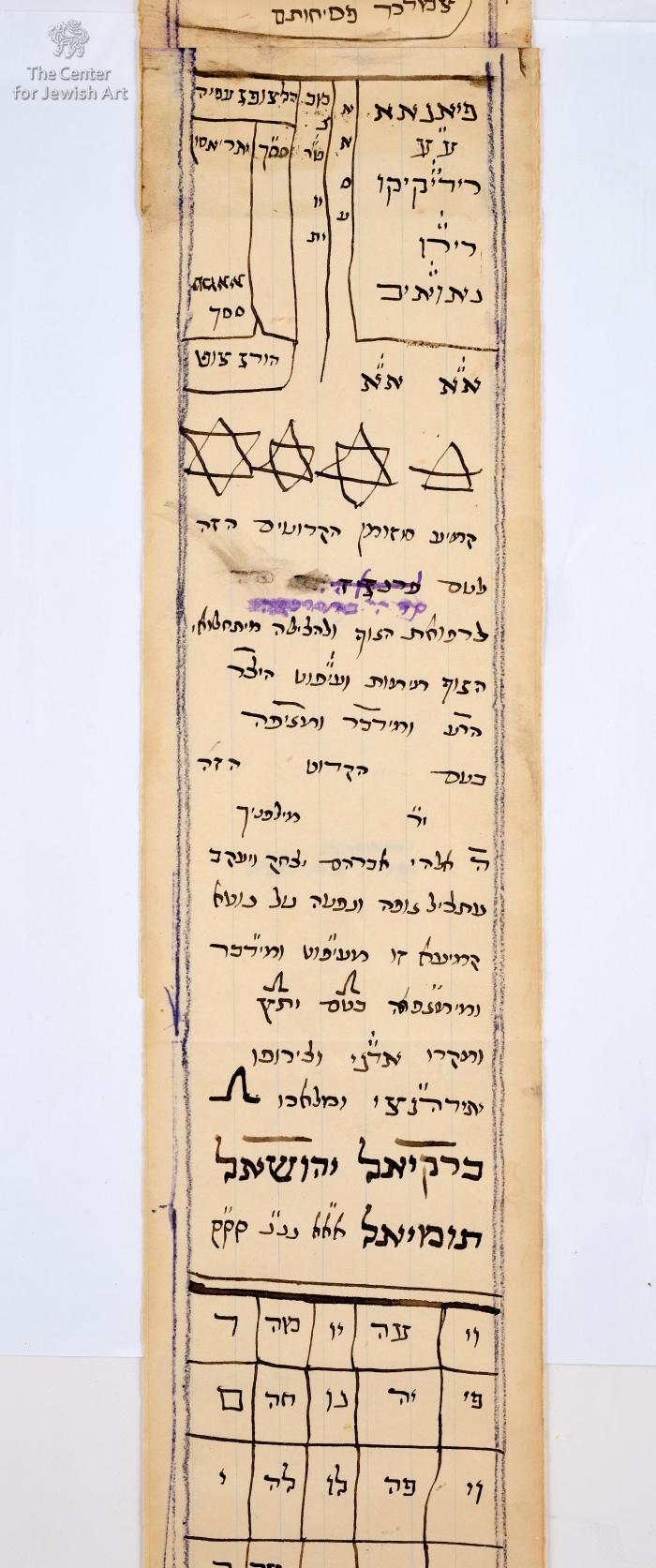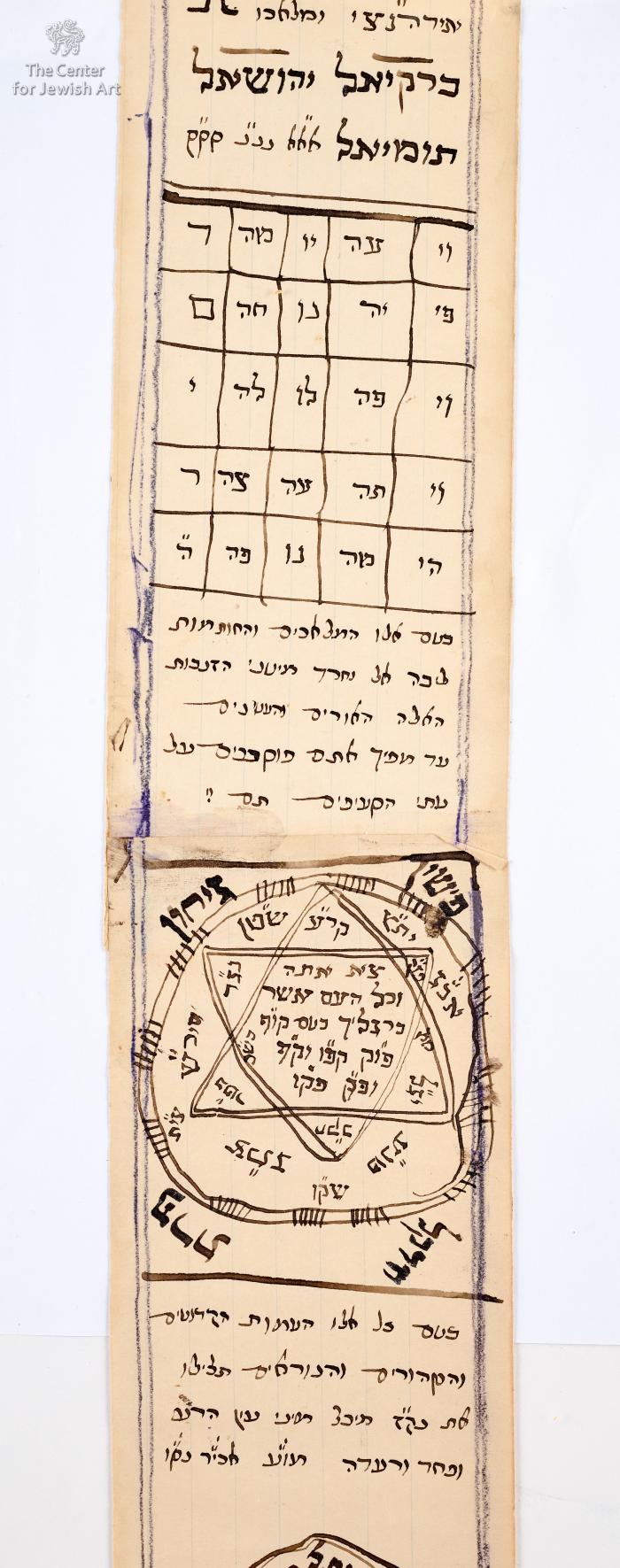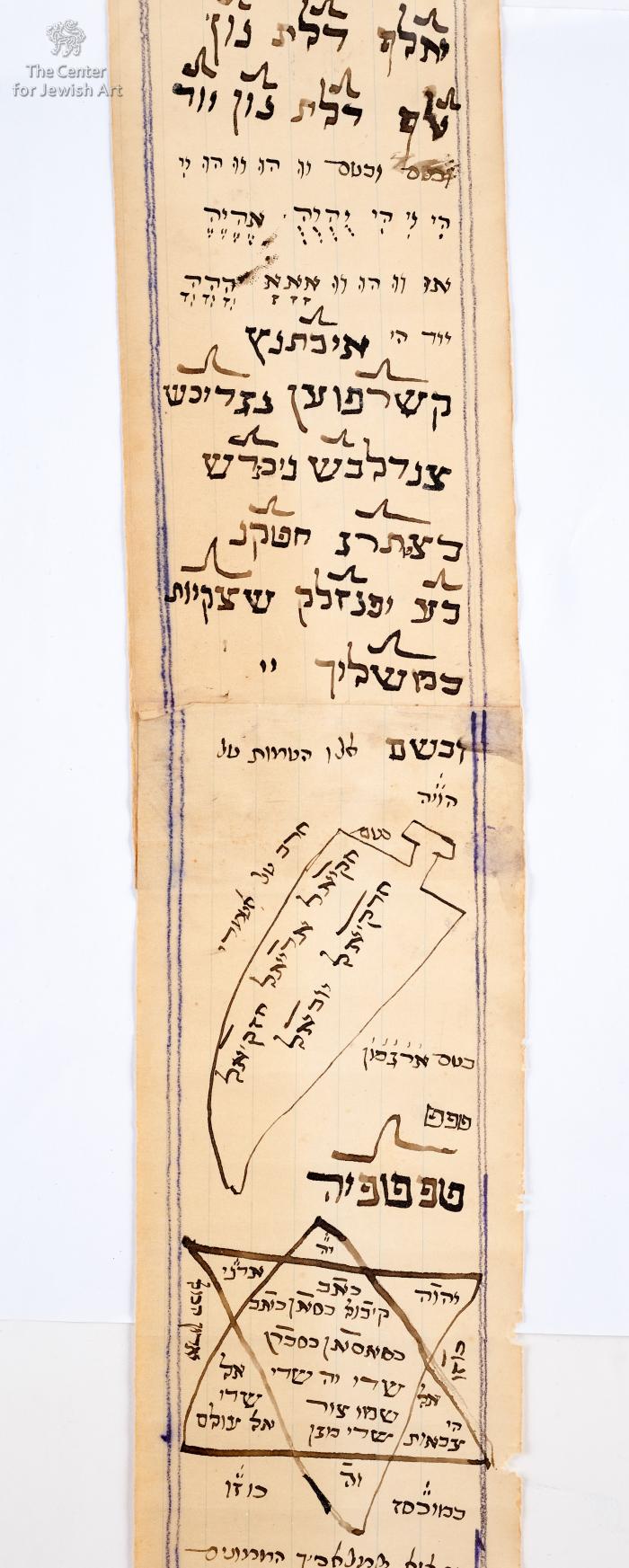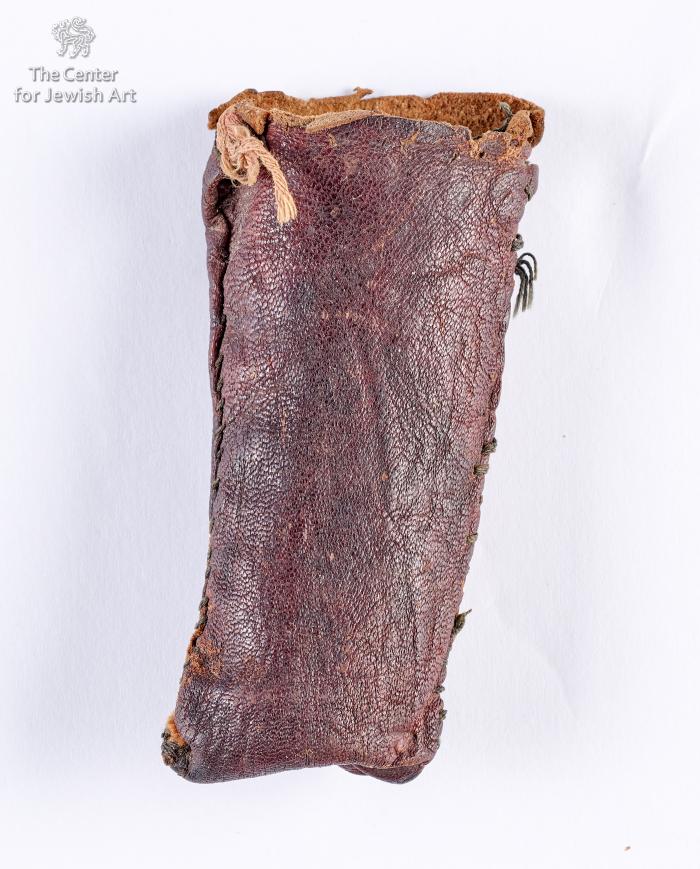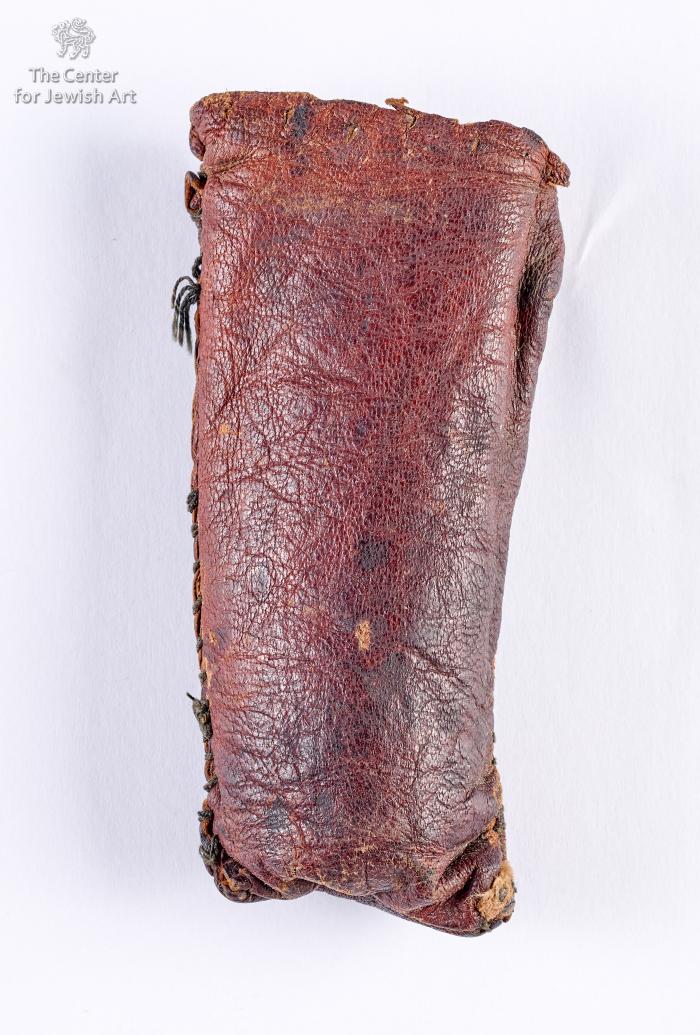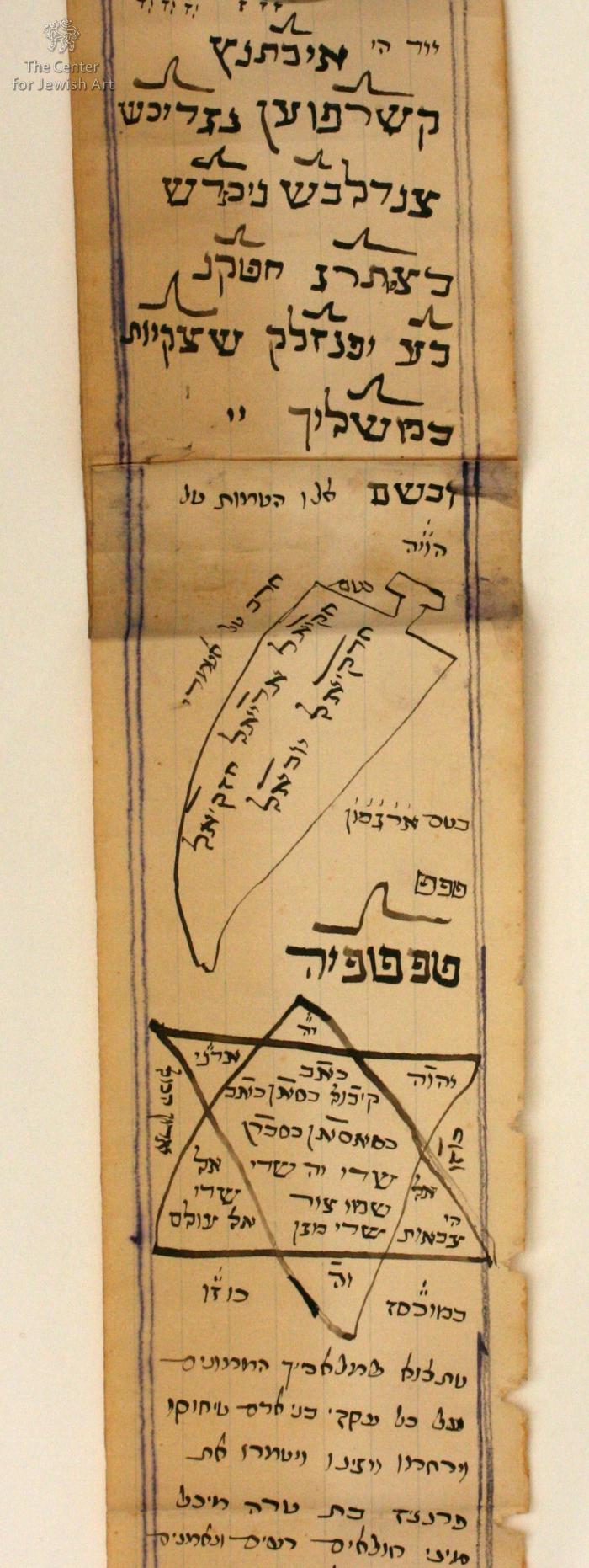Obj. ID: 51185 Amulet, Iraq, circa 1920

sub-set tree:
The following description was prepared by William Gross:
From earliest times, man has tried to protect himself from misfortune by the use of objects which he considered holy or otherwise (e.g., magically) potent. Amulets and talismans are items generally worn around the neck or wrist, carried in a pocket or purse or hung on a wall. They are meant to protect or aid those who carried or wore them. The Hebrew word for amulet, kame‘a, has the root meaning "to bind". Jewish amulets are usually comprised of texts (either letters or graphic symbols) that are inscribed on some sort of material; some may also contain plant matter or precious stones. The texts of amulets usually include holy names that are believed to have the ability to affect reality, along with incantations summoning angels or other magical powers. For the most part, an amulet has a specific purpose: to ease childbirth, facilitate recovery from illness, improve one’s livelihood, and so on, but in the modern world many are also made for general protection.
Many amulets were written on long, narrow pieces of paper or parchment. This example carries sections of angel writing. Such long, narrow talismans were usually rolled and were often in an amulet holder, in this case one made of leather. Such long, rolled amulets were in use in almost all areas of the Middle East and North Africa and before the middle of the 20th century were written for specific reasons for individuals by name. The scribe who made this type of amulet was considered a holy man and would often go through a period of purification before he began this writing. He used different texts that were carefully chosen depending on the reason for the preparation of the talisman. The angels invoked were also chosen specifically according the malady addressed.
This particular example is one of several such extremely long, narrow amulets from the Kurdistan area of Iraq that are in the Gross Family collection. They were rolled and kept is some sort of protective container, in this instance a sewn leather gase.The genre was made for a child for protection against evil and was to be kept under his pillow during sleep. The scrolls contain a large amount of text and relatively large amounts of diagrams and illustrations, including the typical Kurdish image of a sword.












